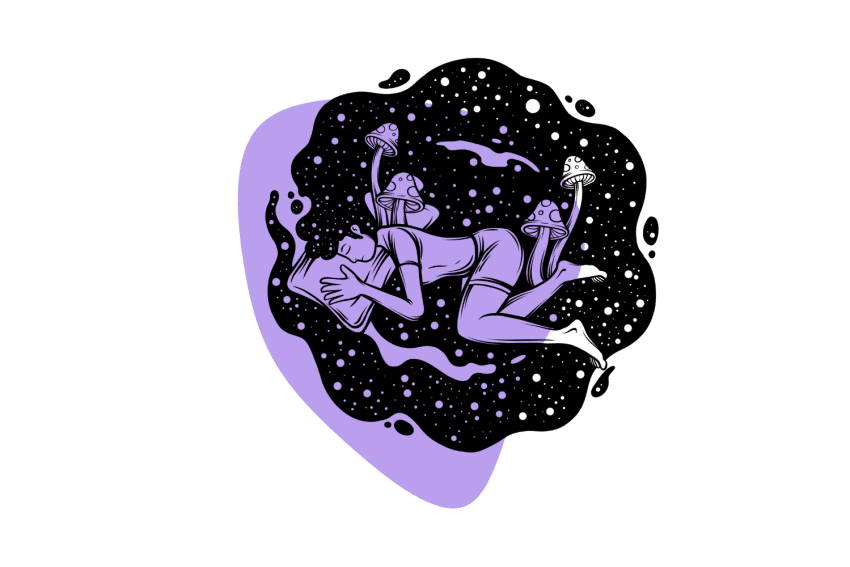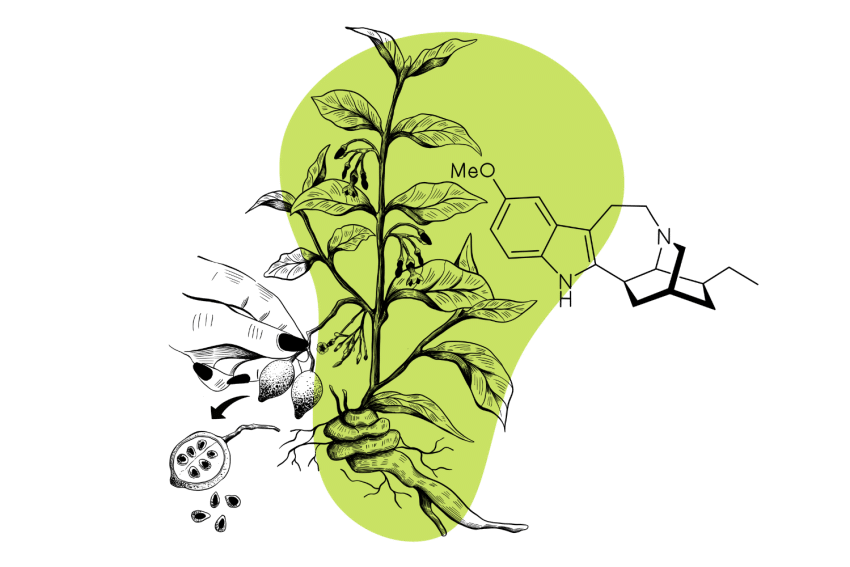Why You Can’t Remember Your Dreams
Just five more minutes…
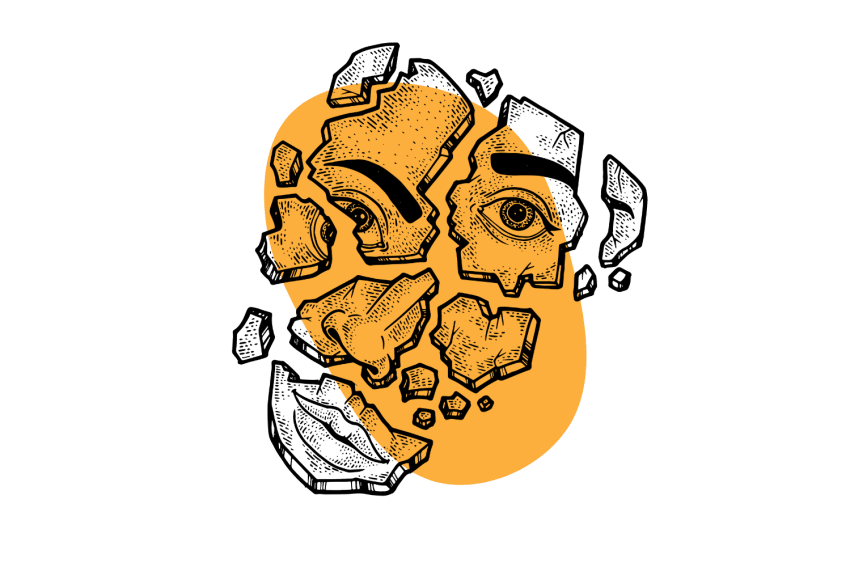
We forget 50% of our dreams within the first minute of waking up and more than 90% by the 10-minute mark.
During dream sleep, many of the brain’s memory storage functions are dormant. Since dreams are ultimately part of the brain’s schematic testing processes, dreams don’t transfer into our long-term memory.
Dreams are the brain’s way of testing out different schemas or organizational blueprints for information, like memories, emotions, interpretations, etc. Since these ‘tests’ are only representative possibilities, there is no real need to record them into long-term memory.
In this article, we explore a few theories surrounding the function of dreams and why we so quickly and easily forget them.
We’ll discuss the different types of dreams, techniques to help you remember your dreams, and cover what dreams might represent. Learn about the parts of the brain that cause dreaming and how dreams interact with memory centers in the brain.
Plus, read about REM sleep and dream recall, as well as the effect of sleep disorders on dreams.
If you’re curious about the dream state and why you’re always forgetting your dreams, this article will help clear up some of the mystery.
Why Do We Dream?
Dreams are part of the basic functioning of the human brain. The dreaming process is important for memory development and consolidation.
Although we cannot always recall what has happened in our dreams, they help us integrate our experiences and form mental schemata, the framework we use to understand the world around us.
Memories — especially those addressed through our dreams — play a big part in determining that framework. Inasmuch, dreams are part of the process of organizing thoughts, feelings, memories, and experiences.
Through dreams, we often live out a variety of possible actions, move through sometimes intense emotional experiences, interact with friends, family, and strangers, or find ourselves in bizarre, non-sequitur situations. This is because dreams are created by the imagination.
During the dreaming process, our brain examines experiential data from the day and organizes it within the brain’s memory systems. This means each experience is compared with other similar past experiences for storage and later recall. However, the actual content, narrative, and output of the dream aren’t part of what is stored in our memory systems.
Aside from assimilating past experiences, dreams can sometimes expose future possibilities and explore the potential outcomes of events. This is because, in dreams, our brain has a safe space to process emotions and feelings, including unconscious fears or desires.
Dreams also act as a placeholder for potential threats. One can explore subconscious concerns without actually acting upon them. Thus the brain has an opportunity to test out possible solutions for problems we may be facing in our lives, even if we don’t realize it.

5 Types of Dreams
There are many types of dreams. When dreams are very powerful or intense, we tend to have a clearer memory of them or find them to be striking and noteworthy. When dreams are very specific, they can seem like a clear answer to a question or provide us with insight into how to act in an upcoming situation.
Take a look at a few types of dreams and their characteristics:
1. Healing Dreams
The dreamer (or a character in the dream) exhibits advanced qualities or skills beyond normal, waking reality, such as telekinesis or hyper sensation. These dreams promote a sense of balance, wholeness, and understanding and offer a sense of purpose.
2. Lucid Dreams
This experience occurs when a dreamer’s conscious mind remains alert while the unconscious mind is at rest and in a REM state. This means the dreamer is conscious during the dreaming process. Some people say that they can control their thoughts and actions within a lucid dream.
3. Prophetic Dreams
Although dreams tend to be part of the memory consolidation process, dreams can also relate to the unknown future. A prophetic dream may present a possible future outcome of an event, offer a specific prediction of what may occur, or be a preparation for a potential experience, desirable or undesirable.
4. Recurring Dreams
Some dreamers experience the same or very similar dreams on a recurring basis. This may include revisiting the same theme in different settings or with different characters, or this may be the same dream experience every time. Some speculate that recurring dreams indicate unconscious issues or concerns within the dreamer.
5. Nightmares
Dreams that contain intense anxiety-producing or fear-based experiences are called nightmares. They are often provoked by unresolved traumas and may contain themes related to stressful situations the dreamer experiences in daily life. Nightmares tend to be more memorable than other types of dreams.

What Types of Dreams Are the Easiest To Remember?
Vivid dreams and nightmares are the easiest types of dreams to remember because they usually carry intense emotional undertones.
The more real a dream feels, the more likely a person is to remember the dream.
Although many vivid dreams are unrealistic and present unlikely scenarios or experiences, if the emotional content is strong and the dream touches on lingering unconscious issues, it will be easier to recall the dream, even days after the dream takes place [1].
The fear or anxiety produced by a nightmare may have a similar effect and remain in memory longer.
Another factor that contributes to easy dream recall is the narrative quality of a dream. If a dream follows a fairly sequential, thematic flow and offers a sense of consistency and coherence, it will be easier to remember than a dream composed of indiscriminate parts.
Interpreting Dreams
According to Sigmund Freud, dreams represent our urges and deeply held desires, especially the unconscious ones. Many other theories corroborate this idea and suggest that dreams act as a viewfinder into the unconscious mind, helping us to see or understand what may otherwise be buried in day-to-day thought-based consciousness.
While dreams may not be a straightforward account of our desires, our fears, our anxieties, or our anticipations, they are often seen as symbolic representations of our innermost thoughts and needs.
There are a lot of ‘interpretations’ associated with various dream imagery, but they should be taken with a grain of salt. The meaning behind specific imagery depends highly on the individual and their past experiences.
This list outlines a few common dreams and their mainstream symbolic interpretations:
- Water — A dream of water is usually associated with strong emotional experiences in daily life. Perhaps you are going through an intense process such as loss or grief.
- Teeth — Many individuals report dreams of loose teeth or teeth falling out. This is associated with unconscious fears.
- Children — Babies or children in dreams often represent a desire for freedom. Maybe you feel held back or restrained in a certain aspect of your life. The appearance of a child or baby indicates that you desire flexibility.
- Animals — Dreams of specific animals tend to represent certain aspects of ourselves or our personality traits or behavioral qualities. If you dream of an animal, consider some of its qualities and compare them with your own. A deeper symbolic message may lie there.
Dream interpretation is subjective, similar to reading tarot cards or analyzing horoscopes. In some cultures, shamans can help interpret dreams and imagery. Be sure to keep an open mind while attempting to interpret and understand your dreams, and be aware that dream interpretation is not a hard science. There’s still a lot we don’t know in terms of deriving meaning from our dreams.

Why Do We Forget Our Dreams?
Since dreams are largely symbolic, open to interpretation, and tend to be abstract and downright strange, it’s no wonder we forget the actual content of our dreams. But why?
Dreams are part of both the memory consolidation process and schematic framework, yet recalling the composition of dreams requires concerted effort.
This seems paradoxical, but let’s consider it from a different angle.
If we observe dreaming as a device used by the brain to:
- Store memories
- Develop organizational schema
We might be able to acknowledge the bizarre output of the process — the actual dream — is not as important as the outcome — effectively stored memories and well-adjusted conceptual frameworks to understand the world around us during waking life.
It’s like learning mathematics. We don’t need to remember specific examples of the math problems, but rather the concepts are what is important.
The idea is that while we’re asleep, the brain is reconsolidating mental schema. While we dream, these schemas are being “tested” to verify the results. Once the test is over, there’s no reason to keep it, so it’s essentially “deleted” from memory.
Our brains are impressive and can store a lot of information, but it can only accomplish this by choosing what’s important to keep and what can be discarded. Our countless hours of random dream data just isn’t something the brain deems worth keeping. Instead, it’s better to save room for more salient information — like names, faces, or skills.

How to Remember Your Dreams (How to Improve Dream Recall)
Unless you have a particularly vivid dream, most people don’t naturally remember the content of their dreams. For those who are curious, it’s possible to train yourself to more easily remember the narrative of your dreams.
Since dreams are considered symbolic, some individuals find it useful to remember their dreams with clarity as a way to understand their psyche and innermost desires.
If you see the value of possible revelations that may come through dreams, you can explore a few practices and techniques to improve dream recall.
Consider these tools for amplifying the dream recall process:
1. Dream Journaling
Recording your dreams in a journal as soon as you wake up is a good way to hone in on the unconscious experience of dreams. With the regular practice of notating your dreams, you strengthen your capacity for remembering the dreams and have a transcript of dream experiences so that you can pay attention to patterns or recurring themes. Follow this guide if you are curious about how to keep a dream journal. Try to keep a notebook and pen close to your bed, so it’s easy to jot down dreams before they slip away.

2. Drink Dream Tea
Blue Lotus Flower tea has historically been said to induce lucid dream states. It seems to offer a combination of properties, including soporific (sleep-inducing), euphoric (mood-enhancing), and oneirogenic (dream-inducing). If you’re interested in exploring and recalling your dreams with more clarity, drinking blue lotus flower tea may help.
3. Smoke Mexican Dream Herb
Calea zacatechichi is a shrub that can be smoked or made into tea. It improves mental clarity and induces lucid dreaming. In psychoactive doses, it makes dreams more vivid and more memorable upon waking up. It tends to enhance the narrative sense of dreams, making them easier to follow the story, interpret and remember.

4. Stay on Schedule
If you maintain a regular sleep schedule of seven to nine hours of sleep per night, you’ll improve your ability to remember your dreams, and it’s also just general good sleep hygiene. Since the duration of the REM sleep stage increases throughout the night, the more consistently you sleep enough hours, the more you’ll dream, and the more likely you’ll be able to recall those dreams.
5. Set an Alarm (Wake Back to Bed)
Some studies indicate that if we are abruptly interrupted from a dream, we have a greater chance of recalling it. If you wake up to the sound of an alarm, the brain does not have a slow, progressive transition from the dreaming state to the awakened state and loses the memory of the dream along the way. Rather there is a sudden shift in consciousness and state of being, so the dreamer has an easier time remembering details of the dream since it’s still fresh in mind.
A method called “wake back to bed” or “WBTB” for short is often used as a technique for inducing lucid dreaming. The idea is to set the alarm to go off one hour before your intended wake time, which increases the chances of being in REM (dream) sleep. For lucid dreaming, the user then goes back to sleep, but if your goal is simply to remember the dream, this second part is optional.
6. Focus on Dreams Immediately Upon Waking
It’s a good idea to practice dream recall techniques immediately upon waking up. Resist the urge to check messages and emails, exercise, or even brush your teeth! If you want to improve your dream recall, let your dream recall technique be the very first thing you do.

Dream Hardware: Which Parts of the Brain Cause Us To Dream?
The brain has evolved in such a way to improve our ability to survive. Since most often we do not remember our dreams upon waking, evolutionary theory would suggest that dream recall is not necessary for survival. However, the dreaming process itself is considered to be a critical part of our well-being and overall brain function.
Here’s a deeper look at parts of the brain and the hardware that contributes to dreaming.
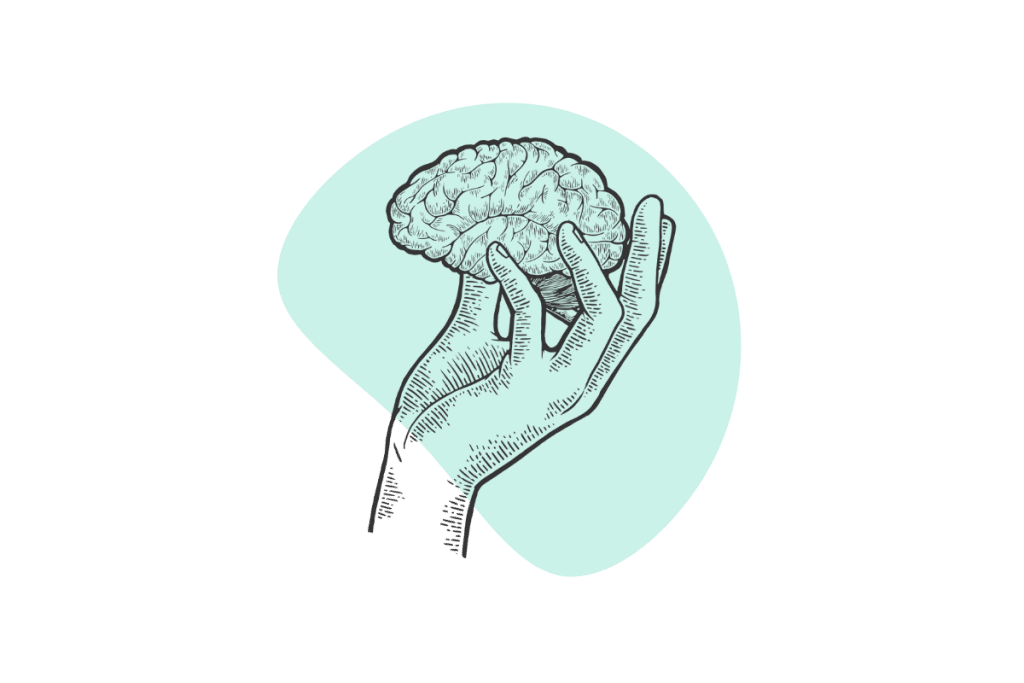
Neurochemical Conditions Of The Brain
Neurotransmitters, or chemical compounds found in the brain, play a role in both the dreaming process and memory storage.
There are functional differences in brain chemistry during wakefulness and sleep, particularly during dream sleep (REM).
Acetylcholine & Norepinephrine
Acetylcholine is a neurotransmitter related to the parasympathetic nervous system that supports resting functions and digestion functions and may contribute to lucid dreaming [3].
Norepinephrine is associated with the sympathetic nervous system and is often related to memory storage and retrieval [2].
Both acetylcholine and norepinephrine are abundant during waking hours, and acetylcholine alone tends to be more active during the dream stages of sleep [4].
On the other hand, norepinephrine exists at very low levels during sleep. Since there is less norepinephrine flowing during sleep, it cannot facilitate memory storage for the retrieval of dreams.
Melatonin & Oxytocin
The hormones melatonin and oxytocin are released before sleep and throughout the sleep cycles.
Melatonin is released by the brain when it gets dark to promote sleepiness. One of the hormones found within melatonin, vasotocin, could be an amnestic agent that erases recent memory during sleep.
Oxytocin is secreted during stress-free scenarios and can also be sleep-promoting. In waking life, oxytocin modulates emotions, so it’s likely related to the emotional sensation we experience during dreams, too [5].

Dream Sleep & Memory Centers
Various parts of the brain are associated with memory storage and recall. By studying how the memory-storing parts of the brain function, we can gain insight into how they might work (or not work) for storing dreams.
Hippocampus
The hippocampus is linked with both sleep and memory. In a study of patients with hippocampal damage, dream recall was fewer and farther between compared to patients in a control group without damage to the hippocampus. Inasmuch, the hippocampus plays an integral role in the dreaming process [6].
Dorsolateral Prefrontal Cortex (DLPFC)
The DLPFC is a brain region that facilitates memory. It has been found that the DLPFC activity predicted successful memory for associations [7].
Another study suggested that the ability to lucid dream was strongly correlated with a high-performing prefrontal cortex [8].
Although exactly how the dorsolateral prefrontal cortex functions within the dreaming process and memory storage devices is unclear, it is certain that without the DLPFC, neither process could take place properly.

Dreaming and Wellbeing
One of the most important aspects of sleep hygiene is getting enough sleep on a routine schedule. Shorter, less restful sleep is associated with life-threatening diseases like stroke and Alzheimer’s disease.
Being underslept can pose serious threats to our overall wellbeing.
One of the reasons sleep is so important for our health is because it allows the brain time to rest and dream. It’s also important for the processing of emotions. Without dreams or sufficient sleep, our ability to learn from past experiences diminishes significantly along with creativity and our problem-solving capacities.
REM Sleep & Dream Recall
The REM sleep stage or rapid eye movement stage of sleep is the period of sleep associated with active dreaming. We spend about 20–25% of our nightly sleep in the REM sleep stage, actively dreaming but infrequently remembering the dreams.
Some research indicates that if sleepers are awakened during the REM stage of sleep, they are 80-90% more likely to recall the dream than those sleepers woken up during other stages of the sleep cycle or allowed to awaken naturally [9].
Curious if this could work for you? Give it a try. Set an alarm to go off about 2 hours after your bedtime begins or an hour before you normally wake up. This is when you’ll be in the first or last cycle of REM sleep, respectively.
If you’re awakened during this REM sleep phase, you may have an easier time recalling the content of the dream.
Sleep Disorders & Dream Recall
Many sleep disorders impact our ability to recall dreams.
For individuals who experience insomnia, since they are sleep deprived, they are also losing out on the possibility to dream and important health functions of REM sleep [10].
Paradoxically though, those with insomnia have increased dream recall, and their dreams tend to be more negative in tone or theme. This is also true for patients with myoclonia [11].
Individuals with sleep apnea, although they may experience frequent nocturnal awakenings, are not known to have greater dream recollection than individuals with no known sleep disorder.
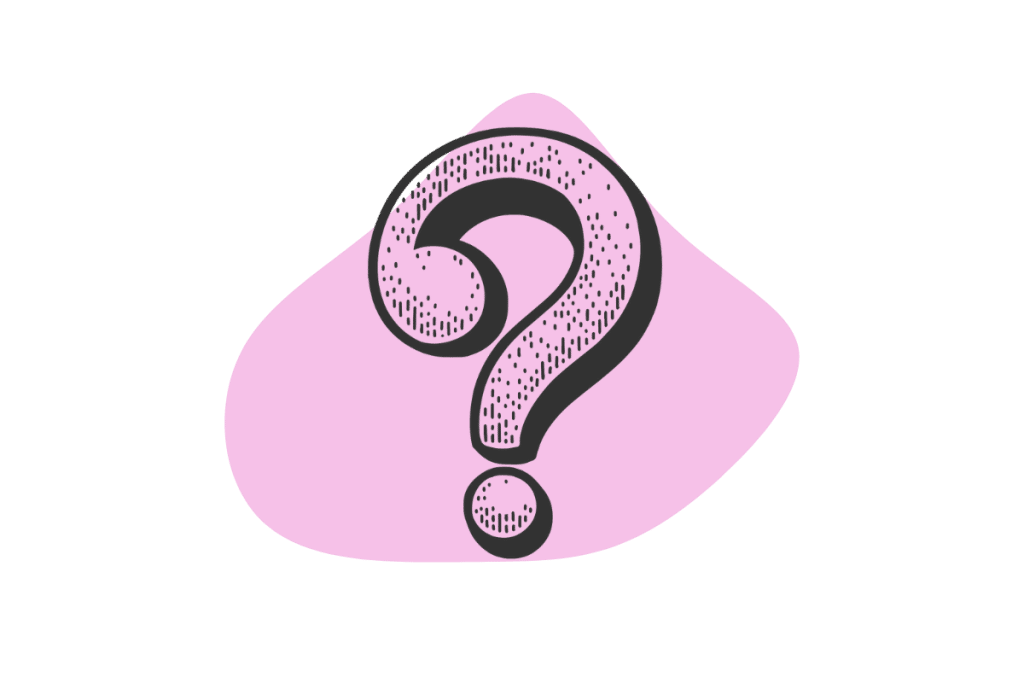
Final Thoughts: Why Do We Forget Dreams?
There are several theories as to why one dreams, and the answer isn’t exactly clear. The prevailing theory is that dreams are essentially a test of reconsolidated and reorganized mental schema — associations and structures of thoughts that help us make sense of the world around us.
There’s no reason to save these tests in memory, so they’re quickly deleted when we wake up in the morning to leave room for more important information. This could explain why we lose so much of our dream almost immediately upon waking.
The best way to train your ability to remember dreams is to keep a dream journal by your bed. Fill it in with anything that comes to mind as soon as you wake up. Eventually, you’ll be able to train your mind to remember your dreams in more detail first thing in the morning.
References
- Cohen, D. B., & MacNeilage, P. F. (1974). A test of the salience hypothesis of dream recall. Journal of Consulting and Clinical Psychology, 42(5), 699–703.
- Gottesmann C. (2011). The involvement of noradrenaline in rapid eye movement sleep mentation. Frontiers in neurology, 2, 81.
- Singh, A., & Gupta, D. (2019). Can acetylcholine make you dream?. Sleep Science (Sao Paulo, Brazil), 12(3), 240–241.
- Becchetti, A., & Amadeo, A. (2016). Why we forget our dreams: Acetylcholine and norepinephrine in wakefulness and REM sleep. Behavioral and Brain Sciences, 39, E202.
- Uvnas-Moberg, K., & Petersson, M. (2005). Oxytocin, ein Vermittler von Antistress, Wohlbefinden, sozialer Interaktion, Wachstum und Heilung [Oxytocin, a mediator of anti-stress, well-being, social interaction, growth and healing]. Zeitschrift fur Psychosomatische Medizin und Psychotherapie, 51(1), 57–80.
- Spanò, G., Pizzamiglio, G., McCormick, C., Clark, I. A., De Felice, S., Miller, T. D., Edgin, J. O., Rosenthal, C. R., & Maguire, E. A. (2020). Dreaming with hippocampal damage. eLife, 9, e56211.
- Murray, L. J., & Ranganath, C. (2007). The dorsolateral prefrontal cortex contributes to successful relational memory encoding. The Journal of neuroscience : the official Journal of the Society for Neuroscience, 27(20), 5515–5522.
- Neider, M., Pace-Schott, E. F., Forselius, E., Pittman, B., & Morgan, P. T. (2011). Lucid dreaming and ventromedial versus dorsolateral prefrontal task performance. Consciousness and cognition, 20(2), 234–244.
- Schredl, M. (2007). Dream recall: Models and empirical data. In D. Barrett & P. McNamara (Eds.), The new science of dreaming: Vol. 2. Content, recall, and personality correlates (pp. 79–114). Praeger Publishers/Greenwood Publishing Group.
- Schredl M. (2009). Dreams in patients with sleep disorders. Sleep medicine reviews, 13(3), 215–221.
- Schredl, M., Bozzer, A., & Morlock, M. (1997). Traumerinnerung und Schlafstörungen [Dream recall and sleep disorders]. Psychotherapie, Psychosomatik, medizinische Psychologie, 47(3-4), 108–116.



